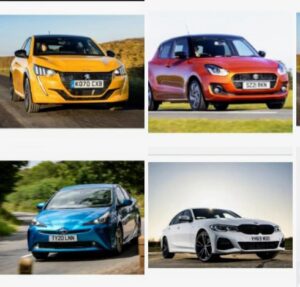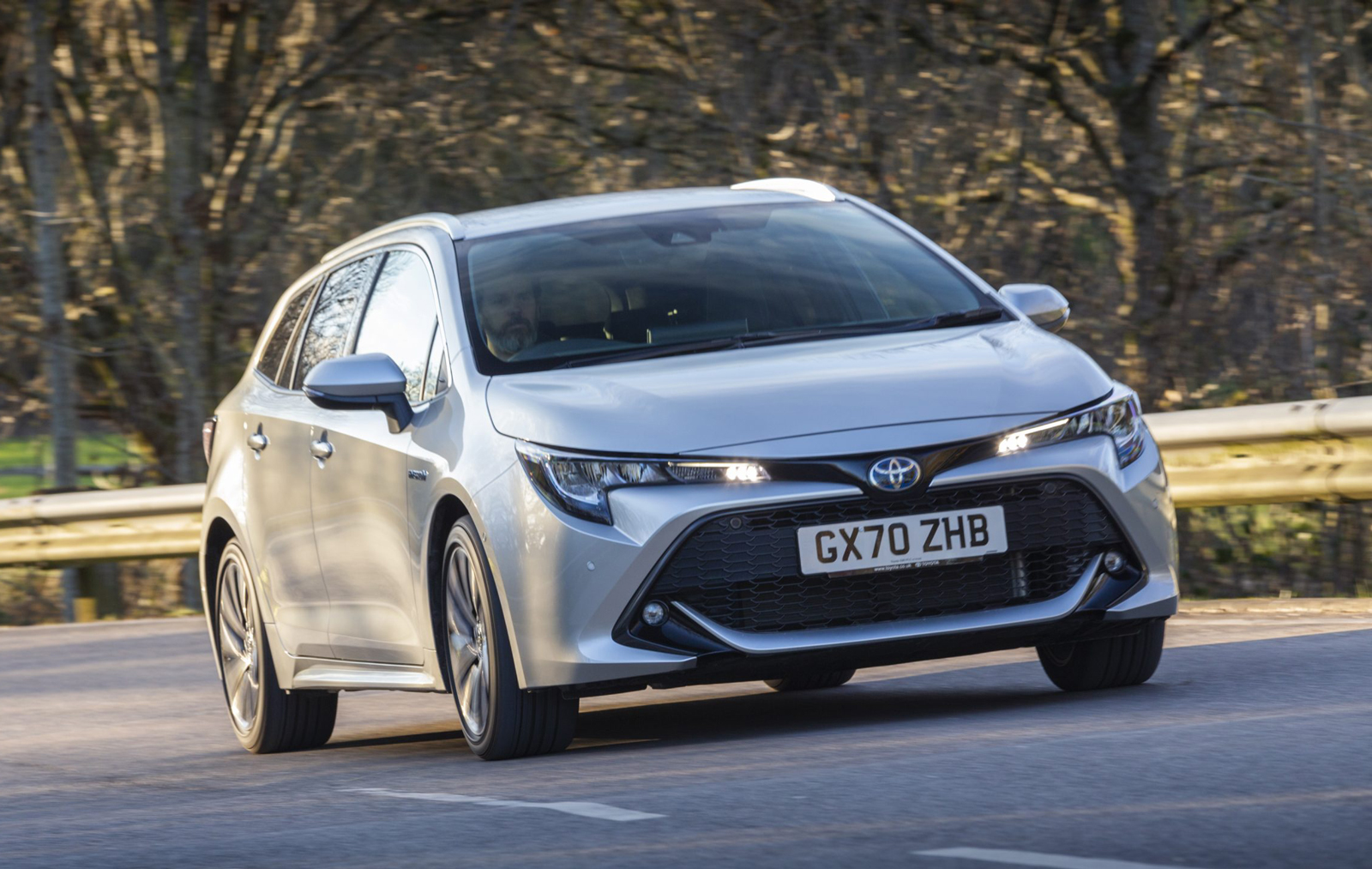By Aminat Umar

The Nigerian Midstream and Downstream Petroleum Regulatory Authority (NMDPRA), has disclosed that the average daily consumption of fuel in Nigeria has fallen by no fewer than 28 percent since President Bola Ahmed Tinubu announced the scrapping of fuel subsidies.
According to new figures released to Reuters by NMDPRA, the average daily petrol consumption fell to 48.43 million liters (13 million gallons) in June, as against the previous average of 66.9 million.
The fuel regulatory industry added that since the scrapping of the subsidy, neighboring countries like Cameroon, Benin, and Togo, which relied on petrol smuggled out of Nigeria, have experienced a collapse in their black market.
It will be recalled that President Tinubu announced the removal of fuel subsidies, which had kept petrol prices low for decades, during his inaugural speech on May 29, 2023.
On the basis of this however, it is pertinent that the cars and vehicles we use in Nigeria should be Fuel-Efficient and we urge to go for the cars that are of less Fuel-Efficient
Hybrid, turbocharger and electric technology are helping to make petrol and diesel engines more efficient than ever

What are the most economical cars?
When it comes to measuring fuel efficiency, we’re talking about the good old miles per gallon (MPG) ratings.
MPG measures how far a car can get on a gallon of fuel (around 4.5 litres).
This can be anywhere from just 11 miles to, well, you’ll have to read on to find out.
Most petrol-engined cars have to play second fiddle to diesel cars when it comes to fuel economy because diesels are the best at sipping fuel.
But since most British buyers prefer petrol and hybrid cars these days, we’ll run through the best cars out there from both worlds, starting with petrols.
Before we get going, we should probably explain that a car’s fuel economy will vary depending on who’s behind the steering wheel, because we all have different driving styles.
For example, a racing driver may have a heavier foot than your nan… but that isn’t always the case.
However, for fairness, the following cars are all listed by their official average fuel economy rating, which is provided by the worldwide harmonised light-duty vehicles test procedure (WLTP).
Here are 10 of the most fuel-efficient cars on sale.
-
Consider an electric car for fuel efficiency

1. BMW 330e – 217.3mpg
Here’s proof that economical hybrid cars don’t have to be boring – the 330e uses a 2.0-litre petrol engine mated to an electric motor offering powerful acceleration and impressive economy.
BMW claims it can cover 37 miles on electric power alone, but you’ll need to plug it in regularly to ensure the battery is charged and performing at its best.
As with the rest of the BMW 3 Series range, the interior is high quality and filled with amazing tech.

2. Toyota Prius – 67.0mpg
Toyota offers both self-charging and plug-in hybrid versions of its Prius, with the latter providing the better official economy of 235.4mpg – so long as you can keep the battery topped up.
The self-charging Prius, which doesn’t use a plug, is cheaper on the used car market and returns close to 70mpg, according to Toyota.
Plug-in hybrid Prius models can run on electric-only power over short distances.
As for the interior, it is very well equipped, as with all Toyota models, and built to an incredibly high standard.

3. Suzuki Swift – 64.0mpg
Every current version of the Swift supermini uses Suzuki‘s ‘Boosterjet’ hybrid engine, comprising of a mild hybrid setup that means the electric motor takes some of the electrical strain off the petrol engine.
Since its electric power is ‘mild’, the car can’t run on pure electric power alone, but you still get better economy over a standard petrol engine with the added shove when accelerating.

4. Toyota Corolla Touring Sports – 63.8mpg
The Corolla disappeared from the UK for a few years, but now it’s back and better than ever with some nifty hybrid additions.
This is the estate version, and both it and the hatchback are good to drive, with nicely-judged suspension and handling.
Every version is well equipped, and there’s a choice of two petrol-hybrid engines (a 1.8-litre or 2.0-litre) offering up to 63.8mpg.

5. Hyundai IONIQ – 60.0mpg
As with the Toyota Prius, there’s a self-charging hybrid version of the Hyundai IONIQ, but the plug-in hybrid version is better value as a used car.
This Hyundai‘s power comes from a 1.6-litre petrol engine mated to an electric motor, allowing up to 39 miles on a single charge.
It has lots of standard equipment, a larger boot than the Prius, and its official economy is still good, even if not quite as good as the Toyota’s.
The most fuel-efficient diesel cars on sale:

1. Mercedes-Benz E300 de – 217.3mpg
No, we haven’t made a mistake – this is a plug-in hybrid diesel with a frankly astonishing official economy figure to get you the best mileage.
However, you should note that you’ll need to keep the car’s battery topped up to achieve it.
With a full battery, Mercedes claims you will be able to get 33 miles of electric-only range from the E300 de – enough to get you across a town or city.

2. Peugeot 208 1.5 Blue HDi – 71.4mpg
Launched in 2019, the Peugeot 208 diesel hybrid is one of the sharper-looking superminis out there.
It comes with five doors, fancy LED lights and a 1.5-litre diesel engine that’ll return more than 70mpg, officially.
The baby Peugeot’s interior is equally interesting, with a very slick dashboard that includes instruments you view over the steering wheel rather than through it.

3. Vauxhall Corsa 1.5 Turbo D – 70.6mpg
It’s no coincidence that the Corsa shares its good looks with the Peugeot – both brands fall under the Stellantis umbrella.
Underneath, they’re pretty similar too, because the Vauxhall Corsa shares the Peugeot’s engine and other oily bits, which explains why its economy figure is so similar.

4. Skoda Octavia 2.0 TDI SE – 68.9mpg
Just about any version of the Octavia is a cracking family car thanks to masses of interior space (including a huge boot, especially on the Estate model), but this version adds terrific economy to its repertoire.
This Skoda‘s 150hp 2.0-litre TDI unit isn’t the most powerful engine but it has a lot of torque, which means you’ll be able to leave it in top gear on the motorway and cruise without having to change down much.

5. Volkswagen Golf 2.0 TDI – 68.9mpg
A bit like the aforementioned Peugeot and Vauxhall, the Skoda and VW share many of the same parts underneath.
This version of the Mk8 Golf has the same 150hp diesel engine and six-speed manual gearbox.
It’s not as roomy as the Octavia inside but it feels more premium, with digital instruments on most versions and a large infotainment screen.
-
Spread the cost with car finance
How to be more fuel-efficient
When it comes to choosing your next car, it’s always good to opt for something that’s as fuel-efficient as possible.
This way, you are saving money on fuel and doing your bit for the environment.
There are lots of different engine options when it comes to buying a new car, but the most fuel-efficient are petrols with hybrid assistance and some newer diesel engines – especially on longer journeys.
But that doesn’t mean normal petrol engines can’t be fuel-efficient. As a standard rule, most modern car engines are efficient thanks to turbocharger and hybrid technology.
What changes can I make to save fuel consumption?
You can make a few changes to your driving style to ensure you’re more fuel-efficient.
1) Turn off your A/C
Turning off your air-conditioning is easy to do and saves a fair chunk of fuel because your engine is powering much more than you think behind the scenes.
2) Become a ‘Smooth Operator’
Being steady with your right foot is another great way to reduce your fuel consumption.
For example, if you’re on the motorway, you want to keep your revs and speed as still as possible to maximise fuel economy.
The same goes for setting off in your car – the smoother you are, the less strain is being put on your engine.
3) Get up and walk a bit more
Another way to ensure you are being as efficient as possible is to try and avoid shorter trips.
This is because your engine needs time to warm up, so if you’re driving five minutes down the road for a loaf of bread, the chances are it’ll still be cold when you get back.
This means the fluids haven’t had a chance to flow around the engine, resulting in an unhappy engine.
In conclusion however, according to the World Bank in June, despite having spent $2.41 billion on the subsidy in the first five months, Nigeria could save up to $5.10 billion this year from the removal of fuel subsidies and foreign exchange reforms.
The Nigerian government spent no less than $10 billion (£7.8 billion) on the subsidy last year.
The subsidy, introduced in the 1970s, had kept fuel prices cheap for decades but had become increasingly expensive, costing the government $10bn last year.
“Subsidy” became a national buzzword in 2012 when then-President Goodluck Jonathan announced its removal. Fuel prices increased from 65 naira ($0.14) to 140 naira ($0.30) per litre and triggered almost two weeks of protests known as Occupy Nigeria, causing Jonathan to reverse the decision.









